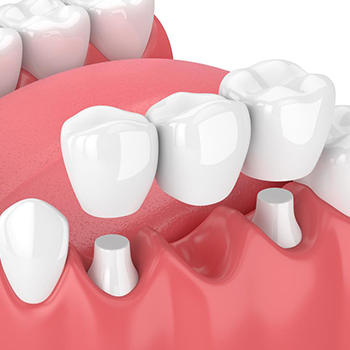Missing a tooth can lead to various forms of discomfort that significantly impact daily life. One of the most immediate concerns is the difficulty in chewing, which can make eating uncomfortable and lead to dietary changes, often resulting in inadequate nutrition. Additionally, the absence of a tooth can cause surrounding teeth to shift, leading to misalignment and further dental issues, including jaw pain. Aesthetically, individuals may feel self-conscious about their smile, affecting their confidence and social interactions. Psychological discomfort can also arise from the insecurity associated with missing teeth, potentially leading to anxiety in social situations. Furthermore, gaps can harbor food particles, increasing the risk of gum disease and discomfort during oral hygiene practices. As time passes, bone loss in the jaw may occur, contributing to further instability and discomfort. Addressing a missing tooth using Dental Crowns in Vijayawada promptly can help mitigate these issues and improve overall oral health and well-being.
What is a dental crown ?
A dental crown is a custom-made cap designed to fit over a damaged or weakened tooth, restoring its shape, size, strength, and appearance. Crowns can be made from various materials, including porcelain, ceramic, metal, or a combination, depending on the specific needs and location of the tooth. They are often used after procedures like root canals, to support a tooth with extensive decay, or to enhance the aesthetics of discolored or misshapen teeth. The process typically involves two visits: the first for tooth preparation and impression-taking, and the second for crown placement. During the first visit, the tooth is trimmed and shaped, and a temporary crown is placed until the permanent one is ready. Once secured, dental crowns can improve chewing function, protect vulnerable teeth, and enhance the smile, often lasting many years with proper care.

What is a dental bridge?
A Dental Bridge in Vijayawada is a fixed or removable prosthetic device used to replace one or more missing teeth. It consists of artificial teeth, known as pontics, which are anchored to adjacent natural teeth or implants. The bridge is designed to restore the natural appearance and function of the teeth, improving chewing, speaking, and overall oral health. The process of getting a dental bridge typically involves preparing the surrounding teeth, taking impressions, and fitting the bridge. With proper care, a dental bridge can last for many years, providing a durable and aesthetically pleasing solution for tooth loss. Dental bridges can help to prevent surrounding teeth from shifting, reduce the risk of gum disease, and enhance the overall appearance of the smile, making it a popular option for restoring missing teeth.
Implications of dental crowns vs dental bridges:
Dental Crown:
- Damaged Teeth: Recommended for teeth that are cracked, broken, or severely decayed needing Emergency Dental Crowns in Vijayawada.
- Root Canal Treatment: Often necessary after a root canal to restore the tooth’s structure.
- Cosmetic Enhancement: Used to improve the appearance of misshaped or discolored teeth.
- Supporting Large Fillings: Ideal when a tooth has an extensive filling that lacks stability.
- Dental Implants: Crowns are placed on top of dental implants to serve as artificial teeth.
Dental Bridge:
- Missing Teeth: Suggested for replacing one or more missing teeth in a row by Dentist in Vijayawada , Dr. Hanisha Adusumilli .
- Adjacent Teeth Support: Requires healthy adjacent teeth to anchor the bridge.
- Improved Function: Restores chewing and speaking abilities affected by gaps.
- Prevent Tooth Shifting: Helps maintain the alignment of remaining teeth.
- Cosmetic Reasons: Provides a more natural look where teeth gaps exist for Smile designing in Vijayawada
FAQ’s [Frequently Asked Questions]
How long does a dental crown last ?
The lifespan of a dental crown typically ranges from 5 to 30 years, depending on the material (metal, ceramic, or composite), oral hygiene, and individual dental health, with proper care and regular check-ups extending its lifespan.
Is a dental crown process painful ?
The dental crown process is typically not painful, as local anesthesia is used to numb the tooth and surrounding area. Discomfort may occur post-procedure, but it’s generally manageable with over-the-counter pain relief.
What foods should be taken after dental crowns ?
After getting dental crowns, opt for soft foods like yogurt, applesauce, mashed potatoes, smoothies, scrambled eggs, and soups. Avoid hard, sticky, or crunchy foods to prevent damage during healing.
Major care instructions for dental crowns ?
Avoid hard foods, maintain good oral hygiene, use non-abrasive toothpaste, avoid sticky candies, attend regular dental check-ups, and report any discomfort or unusual changes to your dentist promptly.
Can crowns and bridges be done together ?
Yes, crowns and bridges can be done together. Often, crowns are used to support the abutment teeth for a bridge, providing stability and strength for replacing missing teeth effectively.
Is a dental bridge removable ?
A dental bridge can be either fixed, permanently attached, or removable, such as a partial denture, depending on the type and individual dental needs.
Can diabetic or hypertensive patients get dental crown or bridges ?
Yes, diabetic and hypertensive patients can receive dental crowns or bridges, but it's essential to manage their conditions properly. Consult with best dentist in Vijayawada for individualized treatment planning and care.
Should BP medication be stopped before a crown treatment?
Generally, blood pressure (BP) medications should not be stopped before dental crown treatment. Maintaining stable BP is crucial, but consult your dentist or physician for personalized advice based on your health.
Will crowns or bridges look different from natural teeth ?
Crowns and bridges can be matched to the color and shape of natural teeth, ensuring a seamless appearance. However, material choice may affect how lifelike they ultimately look.
When to consult doctor for issues with crowns or bridges ?
Consult a dentist immediately if you experience sensitivity, pain, or discomfort related to your crowns or bridges, or if your restoration becomes loose, cracks, or falls out.